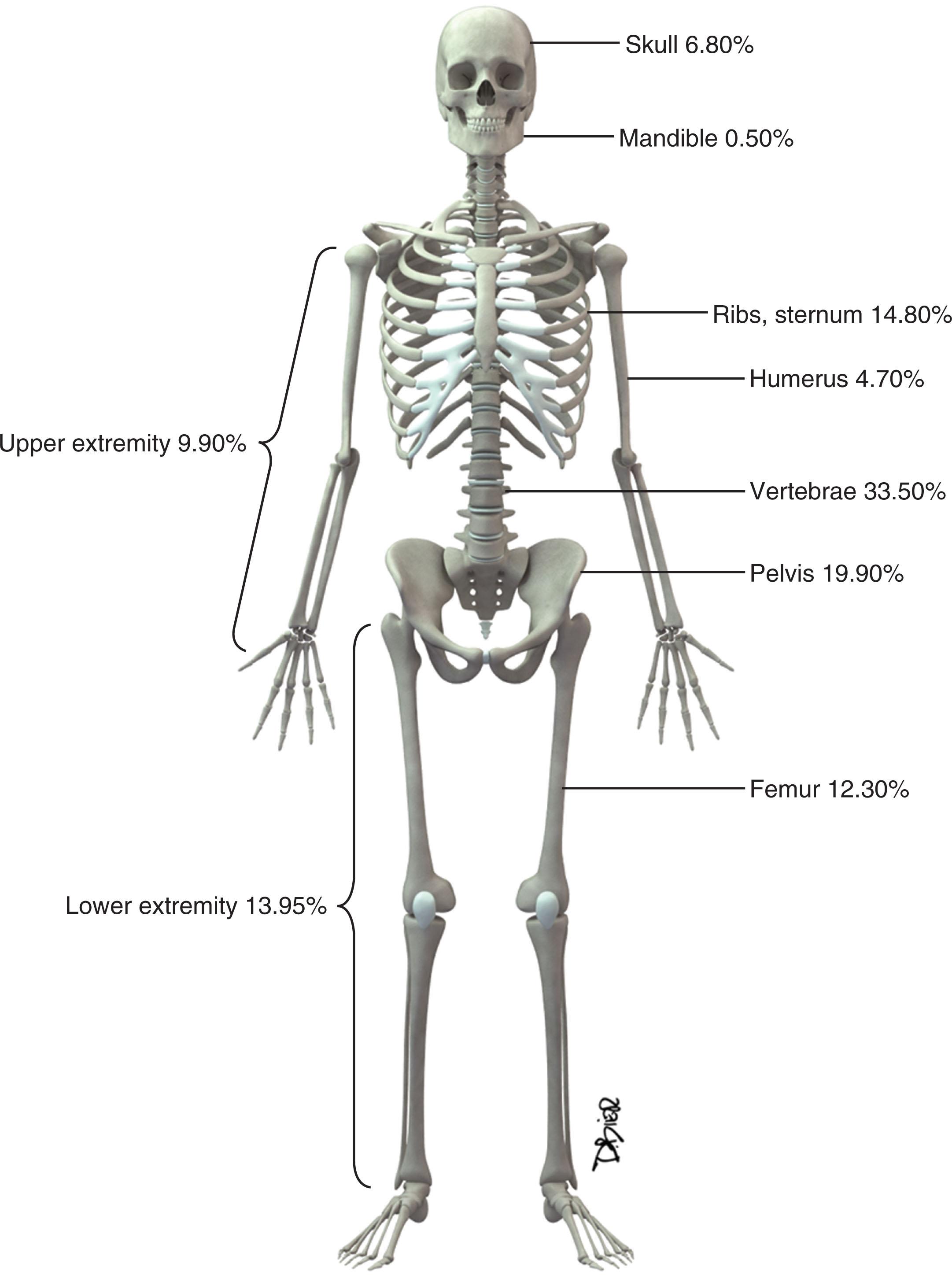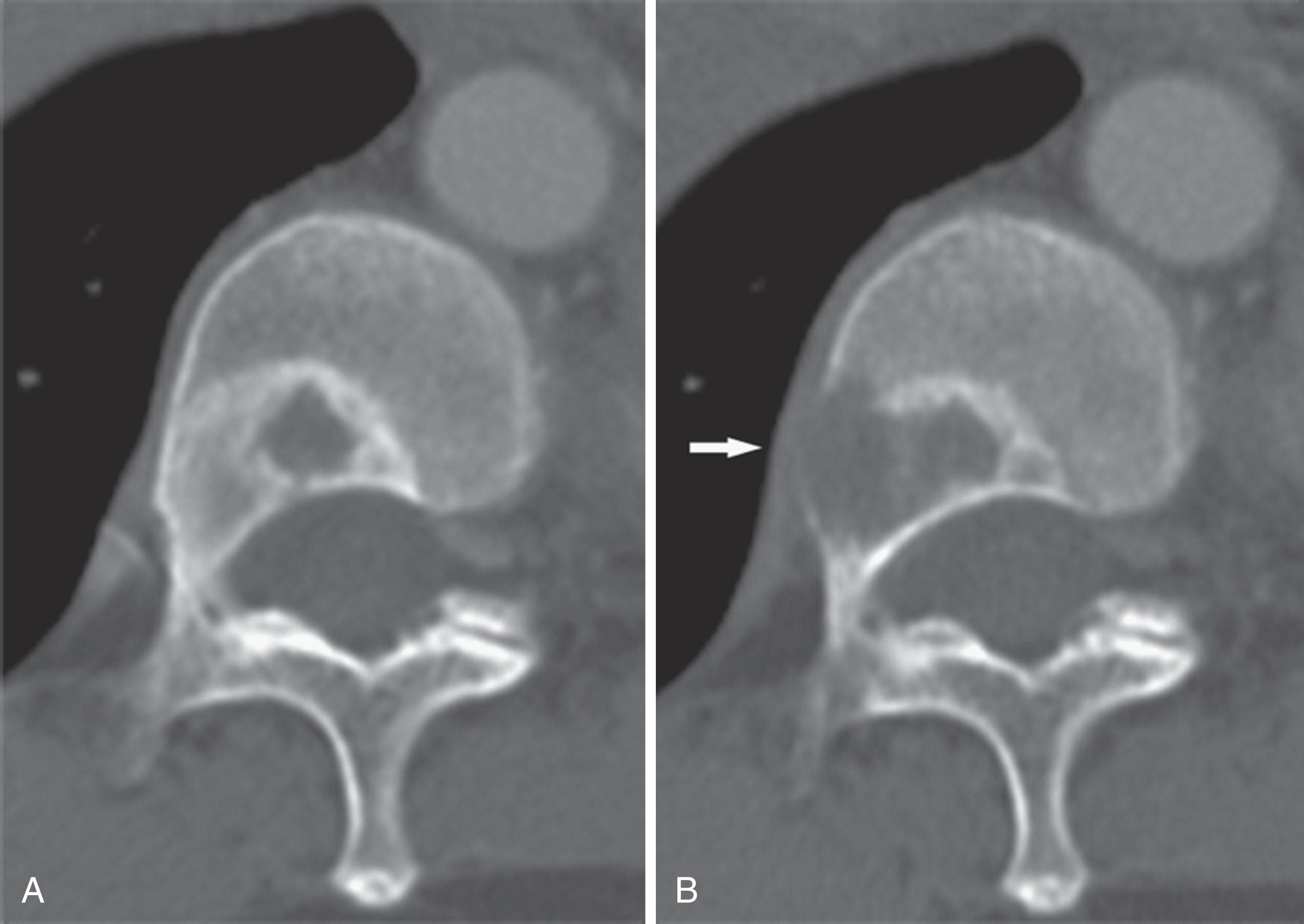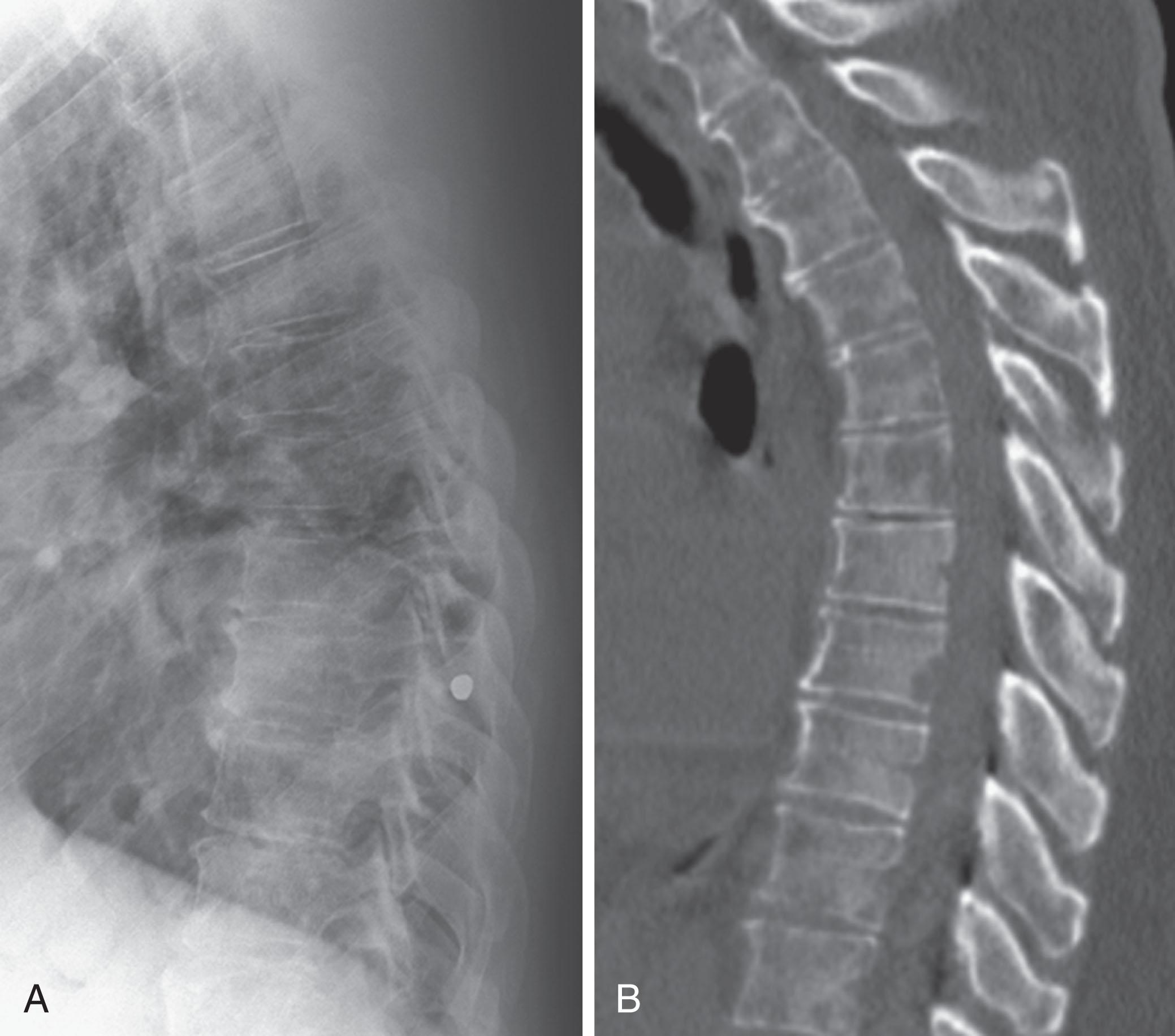Physical Address
304 North Cardinal St.
Dorchester Center, MA 02124
Bone metastases are common in patients with advanced malignancies. Autopsy series have shown an incidence of bone metastases of approximately 70% in breast and prostate cancer and 35% in lung cancer. Osseous metastases can profoundly influence quality of life and prognosis. Early and accurate detection is important for therapeutic planning, and many imaging modalities can be used for this purpose. X-ray–based technologies such as radiography and computed tomography (CT) image bone calcium, skeletal scintigraphy (SS; bone scan) detects bone formation, magnetic resonance imaging (MRI) images the soft tissue of the marrow cavity, and 2-[ 18 F] fluoro-2-deoxy-D-glucose (FDG) positron emission tomography (PET) reflects the glucose metabolism of the lesions. The therapeutic response of bone metastases can be assessed through means of response criteria that are also used to determine the clinical efficacy of cancer therapy. Response criteria developed at the MD Anderson Cancer Center (MDA criteria) are useful for interpreting the behavior of bone metastases. Successful new therapies are prolonging the lives of cancer patients, with a concomitant increase in skeletal metastasis–related complications such as pain, pathologic fractures, and spinal cord compression. Patients with multiple painful bone metastases can be treated with systemic therapy such as bisphosphonates or radiopharmaceuticals. When symptomatic lesions are limited in number, they can be treated with radiation therapy, surgery, or percutaneous techniques such as vertebroplasty or radiofrequency ablation (RFA). This chapter discusses the role of imaging in the detection and therapeutic response of bone metastases, with a discussion of treatment, including topics such as medical therapy, radiation, surgery, and percutaneous procedures.
Cortical bone is compact and lamellar in structure, forming a heavily calcified, well-defined boundary for the marrow cavity and providing the structural support of the skeleton. Inside of the cortical bone resides delicate trabecular bone that supports either red hematopoietic or yellow fatty marrow. The large majority of bone metastases are hematogenous and spread primarily by invasion into and dissemination through the arterial system. Otherwise, venous backflow has been implicated. Metastatic disease can also invade directly into bone from adjacent structures.
Following the distribution of highly vascular red marrow, osseous metastases occur most commonly in the medullary cavity of the bones of the axial skeleton. In a study of 4105 bone metastases in 2001 patients, Clain reported the highest incidence of lesions in the vertebrae (33.5%), pelvis (19.9%), ribs (12.2%), femora (12.3%), skull (6.8%), and humeri (4.7%) ( Fig. 34.1 ).

Bone metastases can be classified as lytic, blastic, or mixed, depending on the activity of tumor-stimulated host osteoclasts and osteoblasts. Osteoclasts are large, multinucleated cells with a specialized cell membrane (the “ruffled border”) that resorb bone, and osteoblasts are smaller, mononucleated cells that form new bone. These cells produce lytic or blastic lesions, respectively, and a combination of the two processes results in mixed lesions.
Lesion margins can be well-defined, ill-defined, or expansile ( Fig. 34.2 ). Unlike primary bone tumors, which typically demonstrate nonaggressive margins when benign and aggressive margins when malignant, virtually all bone metastases are malignant, regardless of the appearance of the margins. Metastases from solid malignancies and myeloma are the most common bone tumors to arise in patients older than 40 years.

Radiography, CT, bone scan, single-photon emission tomography with integrated CT (SPECT/CT), MRI, and PET with integrated CT (PET/CT) or with integrated MRI (PET/MRI) are methods used to detect bone metastases and evaluate their response to treatment. Radiography, like all x-ray–based technologies, primarily images bone calcium, and the majority of the calcium is found in the cortex. Radiography is specific but not sensitive for the detection of bone metastases. A minimum of 30% to 50% bone loss must occur for most lytic metastases to be detectable on radiographs (XRs), and metastases in the axial skeleton are often obscured by overlapping anatomic structures ( Fig. 34.3 ). Nevertheless, the high specificity and low cost of radiography make it an ideal initial imaging modality for the detection of bone metastases in areas of focal pain. Radiography is also optimal to assess for pathologic fracture in the appendicular skeleton.

Become a Clinical Tree membership for Full access and enjoy Unlimited articles
If you are a member. Log in here